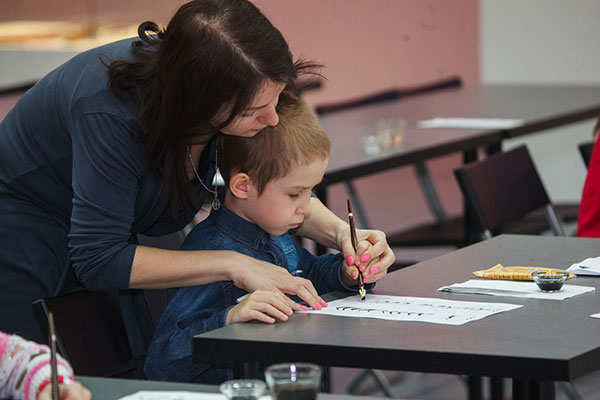What Are the Benefits of Penmanship, and Why Should It Be Taught in Schools?
The Dictionary of the Russian Language by Ozhegov provides the following definition of ‘penmanship’: Penmanship as a school subject is the practice of writing by hand in a legible and beautiful manner. With calligraphy being the art of beautiful handwriting, the two concepts are inseparable.
Unfortunately, teaching handwriting has largely been excluded from the curriculum. Thanks to the new education standards, which are partly to blame, penmanship is now off the list of required school subjects. And let’s be honest, “why should you learn to write beautifully when you end up using your computer most of the time?” This is the most common answer you get from a child when you ask them why they have such terrible handwriting.
Is it indeed necessary to teach students to write by hand? Let’s break it down…
At all times and in all places, in every more or less developed nation, writing has always been taught alongside with language, reading, and arithmetic. We are not going to talk about the times when the aristocracy was the ruling class and penmanship was accessible only to the privileged few. Let us focus on the not-so-distant Soviet past instead.
Back then, penmanship was a compulsory school subject. When nib pens and ink were used in class, it was only after the student had got the hang of writing with a pencil and learned how to do that neatly and regularly. This way, the kid did not just learn to write in a nice and clear way, but also became more focused and patient. Writing skills were valued the same way as language instruction and math. Penmanship was taught on an everyday basis. Each grade had a set of practice worksheets, each with a different height of the lines and a different frequency of the slanted lines.
But now it is the complete opposite. Modern day children start using ballpoint pens as soon as they get into school. And you have to admit it: getting fancy with a pen is not an easy task as the pen literally slides out of control. But what is the reality? In a modern classroom, speed and fluency are valued over beauty, otherwise there is no way you can get everything down. Using a nib pen is harder on the outside but more rewarding when it comes to creating a text that is pleasing to the eye.
Penmanship does, indeed, require math skills. To have a nice-looking regular text, spacing between words, lines, and letters is crucial. The child learns about line and character spacing, letter formation and construction, and what constitutes letterform proportions.
A pencil and a ballpoint pen cannot produce a stroke of varying thickness, which makes it somewhat two-dimensional. But it is different when you write with a flat nib, because here you get another dimension, the ‘width’ variable. You upgrade our writing instrument to an oblique holder and you get another factor, and now it is the shade. If I were to make a sports analogy, then penmanship and calligraphy can best be compared with rhythmic gymnastics, because the human brain works the same way in both activities.
It has long been established that handwriting does help a lot in developing fine motor skills. When you try hard to make a nice piece, this improves your eye-hand coordination and boosts concentration. Writing beautifully requires strong finger, wrist, forearm, and shoulder muscles. It encourages an even breathing pattern and helps you calm down. Even your heartbeat rhythm becomes more regular. Your whole body starts to work in a coordinated fashion. In parts of the brain that are not actively used in everyday life, new neurons start to form. It is a well-known fact that the brain needs just as much exercise as the body. Having hypodynamia does not sound too good, hah? No one really encroaches on PE, do they? Then why did this happen to penmanship? Why does it have to suffer such a bitter fate?
Experienced calligraphy instructors recommend starting with scripts meant for a broad nib. This increases legibility as letters form more distinctive shapes, and it is easier to see what parts they are made of and how they should be formed. Teaching young children while bearing the above in mind is paramount in laying the foundation for a beautiful and regular handwriting. This also helps cultivate the sense of beauty in our kids and may help them find a well-paid job one day.
E.A. Orfanova, an instructor working at the National School of Beautiful Writing Art, the Contemporary Museum of Calligraphy
 What Are the Benefits of Penmanship, and Why Should It Be Taught in Schools?
What Are the Benefits of Penmanship, and Why Should It Be Taught in Schools? Calligraphy is a kind of music not for the ears, but for the eyes.
(V. Lazursky)



